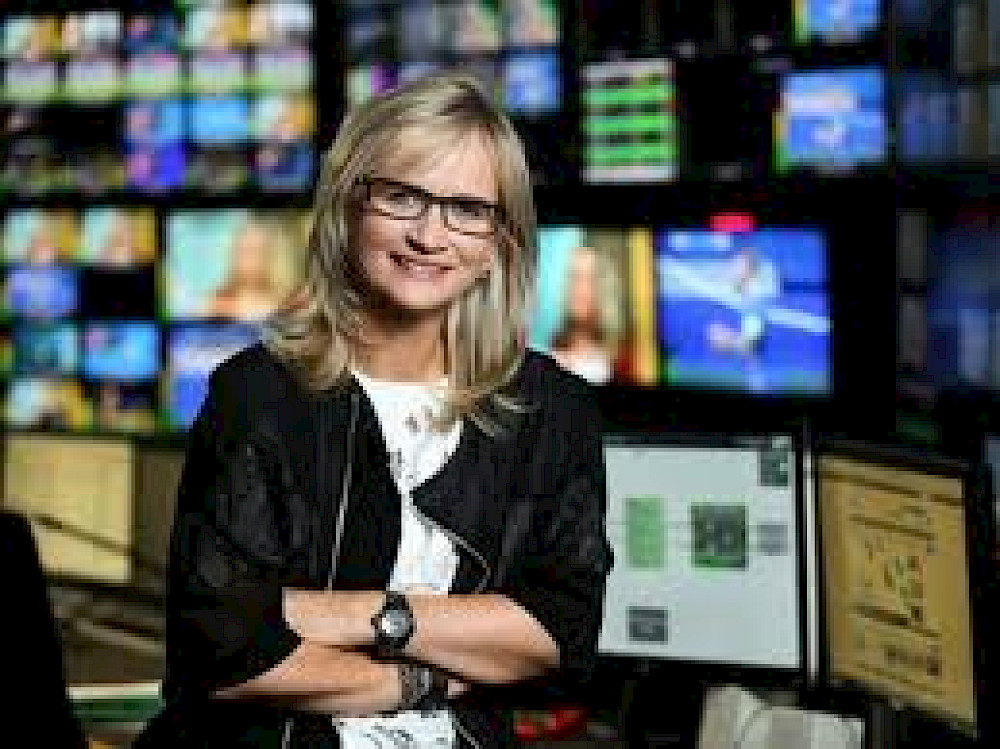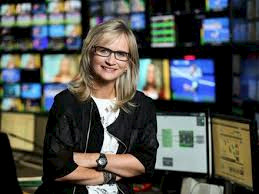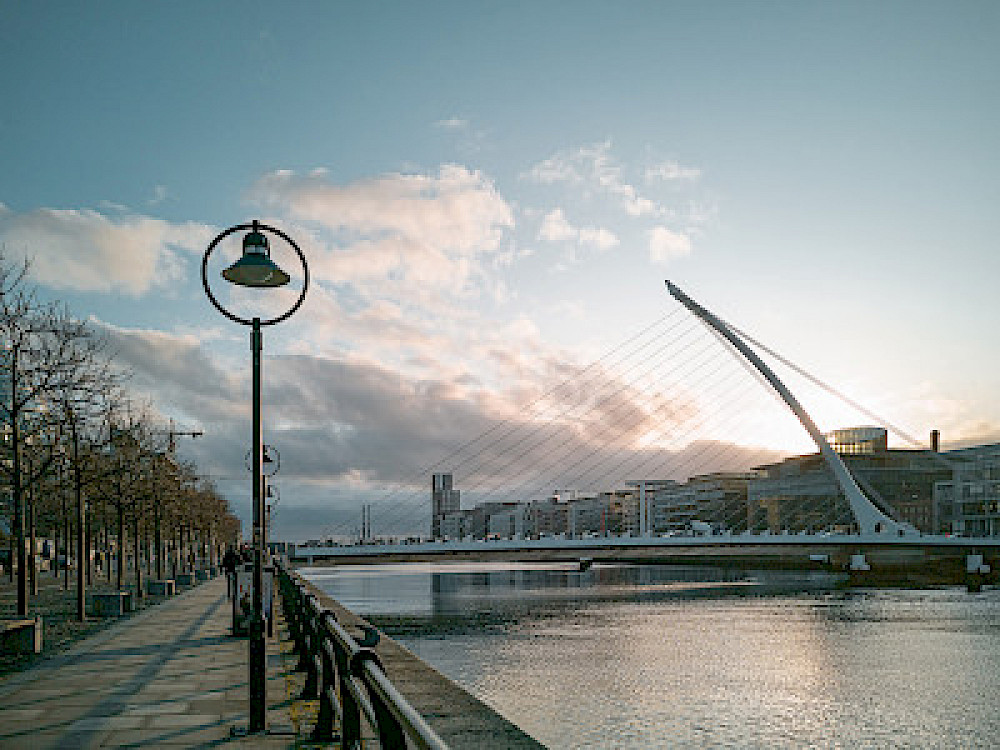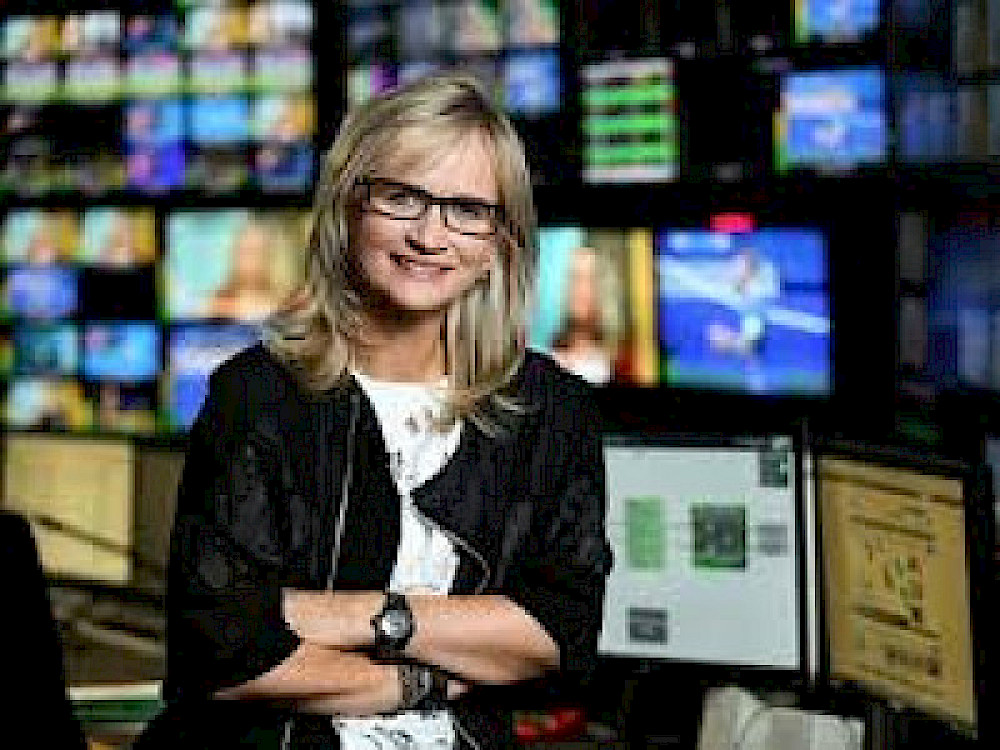Writing in Saturday's Irish Examiner, Roddy Flynn considers RTÉ's economic and cultural challenges.
IT HAS been an interesting fortnight for RTÉ. Last week, director general Dee Forbes addressed the troops with the news that the station needed to lose another 200 staff through voluntary redundancies, and would have to sell nine acres of from the western end of the Montrose campus in order to raise €75m to invest in RTÉ’s ongoing transition to its version of a digital-first strategy.
Ms Forbes also advocated for an increase in the licence fee. This appears to have been nixed by Communications Minister Denis Naughten, who has instead rhetorically emphasised the need to cut down on evasion (currently running about 15%, or €30m in revenue).
The trouble is, things have been equally interesting for the past decade: RTÉ has been in more-or-less permanent firefighting mode since 2008. In that year, the €441m raised from commercial and licence fee revenues resulted in a €33m surplus for the station. Fast forward to the most recent accounts for 2015: Revenues have dropped by a quarter to €334m and, although the station broke even in 2013 and 2014, accumulated losses between 2009 and 2015 are of the order of €116m. This has had real consequences for content.
Popular discourse focuses the need to reduce star salaries (which have fallen by 30%) but this was always a red herring: the cumulative earnings of the top 10 in 2014 (€2.6m) account for less than 1% of the station’s operating costs. Firing Tubridy et al wouldn’t even raise enough to fund one more season of Love/Hate.
Rather, it is in declining levels of drama output and the loss of sporting events (notably Rugby World Cups) where the real impact is felt. It is also evident in the increasing recourse to tried-and-tested — but less culturally distinctive — international formats: witness the reliance on The Voice and Dancing with the Stars as the core of the RTÉ Sunday evening schedule in recent years.
RTÉ, along with the commercial broadcasting sector, has been hit hard by the impact of the recession on advertising expenditure. In 2013, Indecon estimated that total Irish television advertising revenue had fallen from its 2007 peak of €282m to €175m in 2013. (Radio advertising fell €153m to €99m in the same period.) RTÉ appears to have taken the brunt of this — its overall commercial revenues (including broadcast and online advertising and publishing/programme sales revenues) fell from €240m in 2008 to €150m in 2014.
Matters appeared to improve — slightly — in 2014 and 2015 but, in the second half of 2016, Brexit-related uncertainty saw UK-based advertisers curtail their Irish media spend. Television advertising spend in Ireland was expected to grow by 7% in 2016. In fact it was closer to half that.
Even before the recession, the Irish market was already increasingly competitive: in 2002 there were just two overseas channels offering local opt-out ad slots in Ireland. By 2008, this had grown to 12 and again to 36 in 2014. You may never have watched the channels occupying the nether regions of your electronic programme guide or EPG (and certainly they produce little or nothing aimed at an Irish audience) but their micro-market shares cumulatively eat away at the share (and thus advertising revenues) of established players. “All other TV” accounted for 25% of television viewing in 2010. In 2016 it was more than 30%.
This has posed challenges for other players. Although the perception that — news and current affairs aside — the ill-fated UTV Ireland offered less to Irish viewers than its Belfast-based predecessor torpedoed its prospects, the contraction of the television advertising market has made any new proposition marginal. Despite an investment from Liberty Global, City Channel closed in 2011 and the Mayo-based, diaspora-themed Irish TV operation struggled from its 2014 inception.
Even TV3, currently riding on a high with three channels and — courtesy of parent company Liberty Global’s acquisition of UTV Ireland (now rebranded as Be3) — with Coronation Street and Emmerdale back in the schedules has struggled to return a profit (although this was complicated by its legacy debt burden) though there is some security in the deep pockets of its US-based cable giant owners.
The presence of those same channels has changed the political context in which RTÉ competes for commercial revenues. Although RTÉ was dual-funded from its 1926 launch as 2RN, new commercial entrants from 1988 argued that RTÉ’s role should be limited to addressing market failure — ie, providing that which commercial operators would or could not.
This discourse sought to undermine the legitimacy of RTÉ’s pursuit of commercial activities and, to some extent, it succeeded. From its 1998 launch, TV3 routinely complained that RTÉ was using public funds (licence fee revenue) to offer artificially low advertising rates. Although the Competition Authority did not accept this, another complaint to the European Commission, suggesting that RTÉ’s public service remit was so ill-defined as to be meaningless, was upheld. In consequence, the 2009 Broadcasting Act required RTÉ (and TG4) to clearly identify how market and licence fee revenues were respectively allocated to their commercial and public service functions.
In 2013, after the first five-year review of funding for RTÉ and TG4 mandated by the 2009 Broadcasting Act, the BAI recommended that two things occur in tandem: firstly, that RTÉ’s access to public funding should increase (logically, through an increased licence fee) but also that this should coincide with a reduced reliance on commercial revenues, perhaps by introducing a statutory limitation on RTÉ’s commercial activities.
Such a plan might have begun to address RTÉ’s ongoing revenue difficulties whilst simultaneously placating purely commercial media. Yet despite subsequent repetitions of this recommendation, successive ministers have essentially ignored the BAI. The licence fee has remained at €160 for nearly a decade, well below the European average of €220. The cost of the fee in any case obscures the limited size of the licence-fee pool. Even if all 1.7m households in Ireland bought licences, the maximum revenue that could be raised is about €270m, of which — after topslicing collection fees, the BAI-administered Sound and Vision Fund, and TG4 funding — about 85% would go to RTÉ.
For illustration, in their last annual accounts, the BBC recorded licence fees receipts of stg£3.7bn (then €4.7bn) plus stg£1.1bn (€1.4bn) in commercial revenues. Television production costs don’t scale downwards in line with population and RTÉ inevitably struggles to offer a broadly similar range of content with 95% less revenue.
Nonetheless, 85% of €272m (€232m) would be €55m more than the €178m of licence fee revenue RTÉ received in 2015, and would go some way to addressing the hole in the station’s finances, while facilitating the introduction of some measures to cap RTÉ’s commercial activities. These maths underpinned the proposal — first suggested in 2011 by then minister Eamon Ryan — to replace the licence fee with a household broadcasting charge.
BY USING the same Revenue Commissioner database built for the household property tax, the broadcasting charge would have addressed evasion rates (compliance with the property tax is at something like 98%) and the legal circumvention of the licence fee by those who, while not owning a TV set, nonetheless have access to RTÉ content via online services. (40,000 people signed declarations in 2015 stating they had no television set, up from 30,000 in 2014.) Yet, as the water charge protests grew into a significant and sustained political movement after 2012, the last government became increasingly reluctant to open up a new front in the war of levies on the public. The involvement of the Revenue Commissioners, in particular, threatened parallels with the property tax protests and, in 2015, Alex White conceded that the broadcasting charge would not be introduced in the lifetime of his government.
Other measures designed to address evasion — such as requiring Sky and UPC to make their subscriber lists available to An Post — were mooted and then abandoned as 2016 drew nearer. What politician wanted to be seen to be getting tough on licence fee evasion in the run-up to an election?
Faced with persistent political unwillingness to address the hole in the public side of their revenues, RTÉ has been forced to consider the only options left to them: reducing the cost base and increasing commercial income.
In the review which informed the BAI’s 2013 recommendations above, management consultants Crowe Horwath expressed the view that RTÉ could achieve cost savings through greater reliance on commissioned independent production. RTÉ initially argued that the cost of stripping out the infrastructure made redundant by such a move would outstrip any savings: indeed cutting independent commissions (expenditure on which halved from an €80m peak) had been part of the pre-2013 cost-cutting exercise. However, under Dee Forbes, there has clearly been a rethink as signalled by last November’s announcement that RTÉ children’s programming would be completely outsourced.
The other element of the jigsaw puzzle — increasing income — is further complicated by changing media consumption patterns, especially among precisely the age cohort most sought by advertisers: 15 to 24-year-olds. For media buyers, RTÉ skews old, so to speak. Active efforts have been made to address this but while the re-orientation RTÉ 2 from 2013 saw a mix of “light factual” and domestic comedy make some inroads into that audience, elsewhere the station has been less successful. 2FM, surely the natural destination for a younger audience, has seen its share of the national audience halve since 2008.
However, RTÉ also faces the larger issue confronted by all Irish legacy media in this regard: The reality of competition online. Perhaps surprisingly, notwithstanding the temptations of the online world, we are watching more television (in terms of minutes per day) than ever before. However, there are clear distinctions among age cohorts here. According to TAM, while over-55s watched increasing amounts of television between 2012 and 2016 (reaching just under 300 minutes a day by January 2017) the same period saw a consistent fall in television consumption by under-24s, from just under 150 minutes per day in 2012 to 100 by the end of 2016.
The ubiquity of connected devices — and, in particular, smartphones — allowing us to be online and in front of a screen in a hitherto unimaginable context, has seen television’s relative share of ‘eyeball time’ decline, again especially amongst younger cohorts. Thus, even while legacy media saw advertising revenues decline consistently between 2008 and 2013, gross online ad spend in Ireland grew from €132m in 2011 to €340m in 2015. Mobile accounts for much of the growth, up from €9.9m in 2012 to €141m in 2015.
LEGACY media institutions are themselves beneficiaries of this online growth: by 2015 ComScore reported that INM had 1.6m unique smartphone users, while RTÉ had just over 1m. However, its share of online revenue (RTÉ’s 2015 accounts suggest digital revenues and sponsorship were worth €6.4m, less than 2% of all digital revenues) is dwarfed by that of search engines and social media. Furthermore, the latter can offer advertisers densely layered audience profiles based on browsing behaviour and data scraped from social media profiles. The kind of generic audience data offered by traditional TAM ratings looks increasingly slow and unresponsive.
Moreover, at a point when most homes now have personal video recorders (PVRs) in the guise of a Sky or UPC set-top box, the increasing incidence of time-shifting is making it harder for broadcasters like RTÉ to confidently assert that the ads they carry are actually being watched, as opposed to being fast-forwarded through. Furthermore, although 90% of television viewing remains live, it is particularly concerning that time-shifting appears to be most prominent during the most expensive weekly slots — peak-time on a Friday and Saturday night.
Though still a small portion of overall screen time the use of PVRs has inexorably increased. This is paralleled by the rise of other on-demand services. Within three years of its January 2012 launch, Carat estimated that 340,000 Irish households were subscribing to Netflix, a figure likely to have been augmented by its addition to the UPC platform.
At least one in five Irish households subscribe to the service. For much of the 20th century, the key metaphor for understanding television as a medium was that of was “flow”, which conceptualised an evening’s television schedule as a single text, designed to entice and then retain an audience on a single channel for the duration of the night.
The on-demand era suggests that “file” is now the better metaphor, as a growing cohort of users increasingly access all media outlets through a single screen, more and more indifferent to the provenance of content.
This is the era of hybrid media where, from a user perspective, content from old and new media meld into a single, user-constructed sequence of news, information and entertainment. The question this raises is where a public service broadcaster like RTÉ, which still regards its public service mission as encapsulated across the schedule as a whole rather than by individual programmes, can situate itself?
With the rise of broadband, and thus the potential for accessing high-quality video via IP, television distribution can now bypass terrestrial, cable and satellite providers. (Both the BBC and the UK regulator OFCOM have already declared that digital terrestrial television, DTT, which was only fully introduced in Ireland six years ago, will be obsolete by 2030.) The expectation then is of an audiovisual environment whereby content production giants will no longer reach geographically distant audiences via local channel intermediaries, but will stream content directly into our homes from the US, UK, Australia, Brazil etc. Those who already use torrent sites to illegally download the latest episode of the US dramas, months, if not years, before they reach Irish stations, are thus merely ahead of the curve here.
Spectrum — the scarcity of which was once used to legitimates the creation of state-owned broadcasting monopolies — is now relatively plentiful. Adding another channel to an EPG is technically straightforward, and establishing a channel is relatively cheap if your business model is mainly based on acquired programming. However, that anyone can do it means that everyone has tried to and, as a consequence, as one wanders through the deepest darkest regions of the EPG, the same shows re-appear with diminishing audience returns. This may be viable for a channel spun off a large media giant for whom the Irish market is icing on the cake — but it cannot be a basis for a standalone operation.
Yet herein lies the opportunity for RTÉ: to trade on its capacity to produce original content. TV3 has adopted that logic: although parent Liberty Global is a media giant, it is not a content producer but a platform, and lacks significant content libraries. Part of TV3’s attraction for Liberty when it acquired the former in 2015 was that, as advertising revenues began to drop after 2008, TV3 had moved to invest in its in-house production capacity, building an HD studio and significantly increasing the level of Irish content in its schedules. Thus, TV3 can sell product placement opportunities within their shows and also the show themselves to international buyers. TV3 has enjoyed some success in this regard with Red Rock (sold to the BBC and Amazon Prime), in-house originated game show format, The Lie, and Keith Barry’s 2014 series.
When RTÉ launched its online catch-up player in April 2009, it was unproblematically regarded as an ancillary service, a digital add-on. Since then, RTÉ has experimented with treating it as a primary platform, making some content exclusive to it and offering some — particularly that aimed a younger audience — on a digital-first basis, in advance of its linear broadcast.
A decade from now, it is not inconceivable that the RTÉ app will be the first port of call for the majority of audiences who might once have simply flicked on the television. The logic of hybrid media where audiences are less drawn by overarching content brands and more by individual pieces of content, suggests that, to attract those audiences, the quality, cultural specificity, and uniqueness of that content needs to come to the fore in a way that current funding structures but also RTÉ’s de facto (as opposed to rhetorical) performance of its priorities do not always appear to encourage or permit.
Subscribe to FuJo's Newsletter







